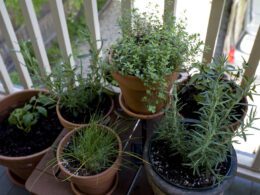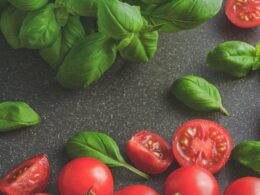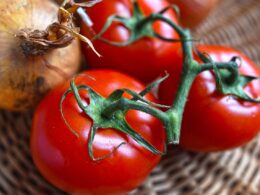Growing your own tomatoes can be a rewarding experience, especially when you bite into that first juicy, ripe fruit. One of the secrets to getting the most out of your tomato plants is knowing how many branches to leave on each plant. This may seem like a minor detail, but it’s essential for ensuring your precious tomatoes have enough energy and resources to grow strong and healthy.
Pruning is an important aspect of tomato plant care that often gets overlooked by novice gardeners. By removing the right amount of branches, you’re not only helping your tomato plants focus their energy on producing more delicious fruits but also keeping them healthy by preventing diseases and pests.
In this article, we’ll guide you through understanding tomato plant growth patterns, pruning techniques, and how many branches you should leave on your tomato plants for optimal results. So let’s get started on turning your backyard into a bountiful oasis!
Understanding Tomato Plant Growth Patterns
It’s crucial to comprehend the growth patterns of tomato plants in order to determine the appropriate number of limbs to maintain for optimal results.
Tomato plants are classified into two categories: determinate and indeterminate. Determinate plants grow to a specific height, produce all their fruit at once, and then die back. Indeterminate plants, on the other hand, continue growing and producing fruit throughout their lifespan. Knowing which type you have will help guide your pruning decisions.
When it comes to tomato plant care, it’s essential to provide support such as stakes or cages for your plants so they can thrive without being weighed down by heavy fruit-laden branches. Regularly inspecting your plant for pests and diseases is also vital in maintaining its overall health. If you spot any yellowing leaves or signs of insect infestation, be sure to address these issues promptly.
As you become more familiar with the growth patterns of your tomato plant, you’ll start noticing when certain branches may need pruning in order to encourage better airflow and prevent disease spread. Keep an eye out for ‘suckers’ – small shoots that grow between the main stem and a branch – which can divert energy from fruit production if left unpruned.
By understanding how your tomato plant grows, providing proper support, and keeping an eye out for potential problems, you’ll be well on your way to enjoying a bountiful harvest from your healthy tomato plant!
Importance of Pruning Tomato Plants
Don’t underestimate the power of pruning those tomato plants – it can make a world of difference for their growth and productivity!
By removing excess foliage, you’re not only improving air circulation and reducing the risk of disease, but also allowing more sunlight to reach the remaining leaves. This helps your tomato plants produce more energy through photosynthesis, ultimately leading to bigger, healthier fruits.
As you trim away unnecessary branches and suckers, you’re teaching your tomato plant to focus its energy on fruit production rather than excessive foliage growth. This means that instead of wasting nutrients on growing many small tomatoes or an overcrowded jungle of leaves, your plant will zero in on producing fewer but larger and tastier tomatoes.
Plus, pruning helps prevent pests from hiding in dense vegetation and reduces the chance of fungal diseases.
So don’t be afraid to grab those pruning shears and give your tomato plants some well-deserved attention. Regularly trimming off dead or damaged leaves as well as any unproductive side shoots will ensure that all available resources go towards producing a bountiful harvest.
Your efforts will be rewarded with healthier plants and delicious homegrown tomatoes that are worth every snip!
Identifying Which Branches to Remove
Understanding which parts to prune is crucial for maximizing your tomato plants’ potential and avoiding unnecessary stress on them. First, focus on removing any dead or yellowing leaves, as these can harbor diseases and block sunlight from reaching the healthy parts of the plant.
Next, look for suckers – small shoots that grow in the joint where a branch meets the main stem. These suckers take energy away from producing fruit, so pinching them off when they’re young will help redirect resources towards growing delicious tomatoes.
When deciding which branches to remove, consider both their position on the plant and their overall health. Remove any branches that are touching or growing too close to the ground; this reduces the risk of soil-borne diseases spreading to your plant. Additionally, if you notice any weak or spindly branches without many leaves or fruit clusters, it’s best to remove them as well; this allows your plant to focus its energy on stronger limbs with better production potential.
As you gain experience pruning your tomato plants, you’ll develop a better sense of which branches are helping produce a bountiful harvest and which ones are holding your plants back. Regularly monitoring and pruning throughout the growing season will not only lead to healthier plants but also increase their yield of tasty tomatoes. Just remember: less is sometimes more when it comes to pruning – don’t get carried away with removing too many branches at once!
Recommended Number of Branches to Leave
So, how do we figure out the ideal number of limbs to keep on our precious plants for optimal growth and tomato production? It’s not as complicated as it may seem.
Generally, you should aim to leave around 4-6 healthy branches on your tomato plant. This will allow for better airflow, minimize the risk of disease, and provide enough foliage to support photosynthesis without overburdening the plant.
To determine which branches to keep, look for those that are strong and healthy with plenty of leaves. You’ll also want to ensure a good balance between fruit-bearing branches and leafy ones that aid in photosynthesis.
Keep an eye out for any signs of disease or damage on individual branches – these are prime candidates for removal.
By maintaining this ideal number of branches on your tomato plant, you’ll be contributing to its overall health and well-being while simultaneously maximizing its fruit production potential.
A proper pruning strategy ensures a bountiful harvest from each plant while keeping them safe from diseases that can spread quickly in crowded conditions. So go ahead and give your tomatoes the attention they deserve – both you and your plants will reap the benefits!
What Effect Does Pruning Tomato Plants Have on the Number of Branches Left?
Pruning tomato plants for growth can have a significant impact on the number of branches left. By selectively removing certain branches, the plant can direct more energy into the remaining branches, resulting in stronger and more productive growth. Proper pruning can lead to a higher yield of tomatoes.
Pruning Techniques and Timing
It’s crucial to master the art of pruning and learn the best times to do it, ensuring your tomato plants thrive and produce a bountiful harvest. Pruning not only helps control the size of the plant but also promotes better airflow and sunlight penetration, reducing the risk of diseases.
Here are some essential techniques and timing tips for pruning your tomato plants:
-
Remove suckers: Suckers are small shoots that grow between the main stem and a branch. They can take energy away from fruit production. To remove them, simply pinch or snip them off when they’re still small, about 2-4 inches long.
-
Top Pruning: As your tomato plant grows taller, you may want to consider topping it by cutting off its highest growth point (the tip). This will encourage more side branching and potentially more fruit yield, especially in indeterminate varieties.
-
Timing: The best time to prune is early in the morning when humidity levels tend to be lower; this reduces stress on your plants as well as decreases chances of disease spread.
Remember that over-pruning can negatively affect your plants’ health too! Balance is key – always leave enough foliage for photosynthesis so that your tomatoes have enough energy for growth and development. Focus on removing unhealthy or nonproductive branches while encouraging healthy growth elsewhere on the plant.
By mastering these techniques, you’ll keep your tomato plants strong, resilient, and ready for a bountiful harvest season ahead!
Conclusion
So, now you know the importance of pruning your tomato plants and how to identify which branches to remove. Keep in mind that leaving around 3-5 main branches will give your plant the best chance for a healthy and bountiful harvest.
Remember to use proper pruning techniques and timing to ensure success in your garden. With these tips, you’ll be well on your way to enjoying an abundance of delicious homegrown tomatoes!









